
JOURNAL OF CHEMICAL ECOLOGY
Scope & Guideline
Illuminating the Chemical Threads of Life
Introduction
Aims and Scopes
- Chemical Signaling and Communication:
Research on how organisms utilize chemical cues for communication, including pheromones in insects and volatile organic compounds in plants, to influence behavior and interactions within ecosystems. - Plant-Insect Interactions:
Studies examining the chemical dynamics involved in plant responses to herbivory, including induced defenses and the role of secondary metabolites in mediating interactions with herbivores and their natural enemies. - Ecological Impact of Chemical Defenses:
Investigations into the ecological roles of chemical defenses in various taxa, including how these defenses affect predator-prey dynamics and community structure. - Chemical Ecology of Invasive Species:
Exploration of how invasive species utilize chemical ecology to establish and thrive in new environments, including the impact on native species and ecosystems. - Metabolomics and Chemical Profiling:
Application of advanced metabolomic techniques to characterize chemical profiles in organisms and their environments, linking chemical composition to ecological function.
Trending and Emerging
- Interdisciplinary Approaches:
Emerging studies increasingly integrate molecular biology, genomics, and ecological modeling to address complex chemical ecology questions, highlighting a trend toward interdisciplinary research. - Impact of Climate Change on Chemical Interactions:
Research exploring how climate change affects chemical signaling and interactions among species, particularly in the context of altered plant secondary metabolite production and predator-prey dynamics. - Chemical Ecology of Microbial Interactions:
Growing interest in the chemical ecology of microbial interactions, especially how microbial volatiles influence plant and insect behavior, is becoming a significant area of research. - Application of Chemical Ecology in Pest Management:
Increasing focus on using chemical ecology principles to develop sustainable pest management strategies, including the design of semiochemical-based traps and lures. - Behavioral Ecology and Chemical Cues:
A trend towards understanding the behavioral responses of animals to chemical cues in their environment, emphasizing the ecological significance of these interactions.
Declining or Waning
- Traditional Chemical Analysis Techniques:
There has been a noticeable decrease in studies relying solely on conventional chemical analysis methods without integrating modern techniques such as metabolomics or molecular biology. - Generalized Studies of Chemical Compounds:
Research that does not delve into the ecological implications of specific chemical interactions or lacks a clear connection to ecological dynamics is becoming less prevalent. - Static Laboratory Studies:
Investigations that primarily focus on static laboratory experiments without considering field applications or ecological context are gradually being overshadowed by more integrative and applied research.
Similar Journals
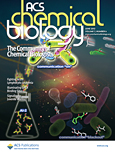
ACS Chemical Biology
Illuminating the Pathways of Biochemical ResearchACS Chemical Biology is a premier journal published by the American Chemical Society, dedicated to advancing the understanding of the chemical underpinnings of biological systems. With an ISSN of 1554-8929 and a distinguished track record since its inception in 2006, this journal provides a vital platform for the dissemination of high-quality research in the realms of biochemistry and molecular medicine, achieving a prestigious Q1 ranking in these categories as of 2023. In an era where interdisciplinary approaches are crucial, ACS Chemical Biology fosters collaboration among chemists and biologists, reflecting a steadfast commitment to exploring the chemical processes that govern life. Although it does not operate under an open-access model, the journal maintains a rigorous peer-review process, ensuring the publication of influential studies that shape the future of chemical biology. With an increasing impact factor and a focus on innovative research, ACS Chemical Biology remains an authoritative resource for researchers, professionals, and students eager to engage with cutting-edge findings in this dynamic field.
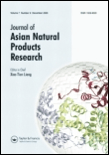
JOURNAL OF ASIAN NATURAL PRODUCTS RESEARCH
Cultivating Insights in Complementary MedicineJOURNAL OF ASIAN NATURAL PRODUCTS RESEARCH is a prestigious publication in the field of natural products, focusing on valuable research spanning analytical chemistry, pharmacology, and complementary medicine. Published by Taylor & Francis Ltd in the United Kingdom, this journal has established itself as a key resource for academics and professionals seeking to explore advancements in drug discovery and organic chemistry. With a converged publication timeline from 1998 to 2024, the journal boasts several commendable category quartiles as of 2023, reflecting its robust standing in the research community: Q2 in Complementary and Alternative Medicine, Q3 in multiple domains including Analytical Chemistry and Organic Chemistry, and Q4 in Molecular Medicine. Although it currently does not offer open access, the journal remains a valuable compendium for empirical research and innovative studies in areas such as pharmacology and medicinal chemistry. Researchers, professionals, and students alike will find the JOURNAL OF ASIAN NATURAL PRODUCTS RESEARCH to be an essential platform for sharing groundbreaking findings and fostering collaborations that lead to significant advancements in science and health.
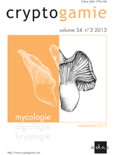
CRYPTOGAMIE MYCOLOGIE
Pioneering Research at the Intersection of Mycology and BiodiversityCRYPTOGAMIE MYCOLOGIE is a prestigious journal published by ADAC-CRYPTOGAMIE dedicated to the study of mycology within the context of ecology, evolution, and biodiversity. With an ISSN of 0181-1584 and an E-ISSN of 1776-100X, this journal is recognized for its significant contributions to advancing knowledge in the field, holding a Q1 ranking in the 2023 Ecology, Evolution, Behavior and Systematics category on Scopus, placing it within the top tier of scholarly publications. Since its inception, with publication years converging from 1990 to 1993 and then from 1995 to 2024, it has served as a vital resource for researchers, professionals, and students alike, offering the latest findings, reviews, and methodologies in mycology. Despite being published without open access options, the journal maintains a strong academic standard and impact factor, established through a rigorous peer-review process. The journal is based in Paris, France, and aims to foster interdisciplinary research that bridges gaps between mycology and related ecological fields.
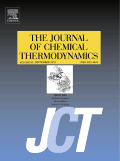
JOURNAL OF CHEMICAL THERMODYNAMICS
Exploring the Depths of Molecular InteractionsThe JOURNAL OF CHEMICAL THERMODYNAMICS serves as a pivotal platform for the dissemination of high-quality research in the field of thermodynamics and its applications across various scientific disciplines. Published by Academic Press Ltd - Elsevier Science Ltd, this esteemed journal, with an ISSN of 0021-9614 and E-ISSN 1096-3626, strives to contribute to the understanding of the thermodynamic properties of chemicals, materials, and molecular interactions. Covering a broad spectrum of topics from atomic and molecular physics to general materials science, it consistently ranks in the Q2 category across multiple fields including Physics and Astronomy, Chemistry, and Materials Science. With its convergence years extending from 1969 to 2025, the journal boasts a respected history and a commitment to fostering scholarly dialogue among researchers, professionals, and students alike. Though it is not an Open Access journal, its rigorous peer-review process ensures that published articles meet the highest standards of scientific excellence, making it an essential resource for anyone seeking to stay at the forefront of chemical thermodynamics research.
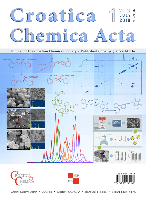
CROATICA CHEMICA ACTA
Exploring the Frontiers of Chemical ResearchCROATICA CHEMICA ACTA, published by the Croatian Chemical Society, is a prominent open-access journal dedicated to fostering the dissemination of research in the diverse field of chemistry. With an ISSN of 0011-1643 and an E-ISSN of 1334-417X, this journal has been a vital platform for scientists since its inception, providing unrestricted access to groundbreaking findings since 1990. Located in Zagreb, Croatia, the journal covers a wide array of topics within general chemistry and strives to contribute significantly to the body of knowledge in the discipline. Although currently positioned in the Q4 quartile of the Scopus ranking within Chemistry (miscellaneous), and ranking #366 out of 408 journals, CROATICA CHEMICA ACTA plays a crucial role in promoting emerging research and innovative methodologies. As a valuable resource for researchers, professionals, and students, the journal encourages the exchange of scientific insights, with an eye towards fostering collaboration and advancing chemical sciences.

Chemical Physics Reviews
Shaping the Future of Chemical Physics ResearchChemical Physics Reviews is a premier academic journal published by AIP Publishing, focusing on the dynamic interplay between chemistry and physics. With its E-ISSN: 2688-4070, the journal is committed to advancing the field through high-quality reviews that address key challenges, emerging trends, and innovative applications in chemical physics. Although currently not open access, it offers valuable insights for both researchers and practitioners seeking to deepen their understanding of theoretical and experimental aspects of chemical interactions. The journal serves as a vital resource for professionals and students alike, ensuring they stay abreast of the latest developments in this interdisciplinary field. As a part of AIP Publishing’s esteemed catalogue, Chemical Physics Reviews plays an essential role in shaping the discourse and fostering collaboration within the global scientific community.
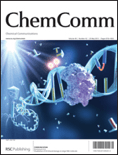
CHEMICAL COMMUNICATIONS
Bridging disciplines with critical insights and discoveries.Chemical Communications, published by the esteemed Royal Society of Chemistry, is a prominent journal within the field of chemical science, focusing on the dissemination of cutting-edge research in a variety of sub-disciplines including catalysis, materials chemistry, and electronic materials. Operating without an open access model, this journal provides critical insights from contributors around the globe, enhancing our understanding of complex chemical interactions and innovative applications. Ranked in the top quartile for several categories such as Ceramics and Composites, and Metals and Alloys, Chemical Communications boasts impressive Scopus rankings, securing strong positions across multiple fields and showcasing its influence within the scientific community. The journal is committed to advancing knowledge and fostering collaboration among researchers, professionals, and students, making it an invaluable resource for those looking to stay abreast of the latest advancements in chemistry and materials science. With a publication history dating back to 1965 and continuing into 2024, its rich archive serves as a vital repository of chemical research and development.
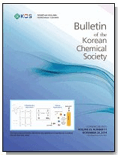
BULLETIN OF THE KOREAN CHEMICAL SOCIETY
Exploring the frontiers of multidisciplinary chemistry.BULLETIN OF THE KOREAN CHEMICAL SOCIETY, published by WILEY-V C H VERLAG GMBH, is a prominent journal in the field of chemistry, with a specific emphasis on miscellaneous chemical research. With an ISSN of 0253-2964 and E-ISSN 1229-5949, this journal serves as a pivotal platform for researchers, professionals, and students who are eager to showcase innovative studies that address both foundational and emerging topics in the discipline. Boasting a commendable Q2 ranking in the 2023 chemistry quartiles, the journal ranks within the top 50th percentile in Scopus, reflecting its commitment to high-quality scientific discourse. The content published within its pages from 1996 to 2024 covers a vast array of subjects, ensuring a multidisciplinary approach to chemical research. The journal’s impact in the academic community is underscored by its accessibility to a global audience, making it an essential resource for those wishing to stay at the forefront of chemical advancements.

Jordan Journal of Chemistry
Connecting Minds: Elevating Chemistry Research to New Heights.The Jordan Journal of Chemistry is a prominent publication dedicated to advancing the field of chemistry in Jordan and beyond. Published by the Yarmouk University Deanship of Research & Graduate Studies, this journal serves as a platform for researchers, educators, and practitioners to disseminate their findings in a variety of chemistry sub-disciplines. Although currently classified in Q4 of miscellaneous chemistry and ranking within the 9th percentile according to Scopus, the journal plays a crucial role in fostering academic dialogue and collaboration in the region. With its ISSN 1814-9111 and E-ISSN 2079-7249, the Jordan Journal of Chemistry offers open access to researchers from diverse backgrounds, ensuring that critical research is both accessible and impactful. By bridging local studies with global scientific advancements, this journal is poised to contribute significantly to the growth and recognition of chemistry as a key scientific discipline in the region, with convergence efforts set from 2020 to 2024.
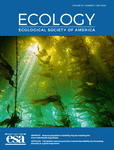
ECOLOGY
Fostering interdisciplinary dialogue in ecological sciences.ECOLOGY, published by Wiley, stands as a premier journal in the field of ecology, providing a vital platform for the dissemination of innovative research and insightful reviews that span various aspects of ecology, evolution, behavior, and systematics. With an impressive impact factor and ranked Q1 in the most recent category quartiles, the journal enjoys a distinguished reputation among scholars, featuring in the 92nd percentile for its subject area according to Scopus. The journal's rigorous peer-review process ensures that the published studies contribute significantly to understanding complex ecological dynamics and advancing the field's theoretical frameworks. Researchers, professionals, and students alike benefit from the rich archive that extends from 1973 to 2024, fostering interdisciplinary dialogue and collaboration. Though not an open-access journal, ECOLOGY remains committed to maintaining high standards of scholarly communication, making it an indispensable resource for anyone dedicated to the ecological sciences.